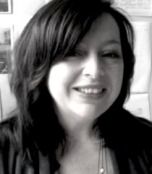Photographer Edward Webster balances digital techniques with historic processes. The basic blueprint for his work and teaching stems from the assertion that photography is a tool that filters the world.
So, he emphasises the importance of ethics in his art.
“It’s not just about teaching technique,” says Edward. “It’s about giving people the opportunity to view the world in a sensitive manner. That underpins everything we do here, as well as everything I do as a professional artist.”
Edward has taught at HSAD since 2002. He has a BA (Hons) in Photography from Blackpool and the Fylde University; and an MA in Contemporary Fine Art from Leeds Metropolitan University, where he developed his specialism in historic processes, including making a large home-built camera capable of producing 11inx14in negatives. This was used in his artist residency at Knaresborough Castle in 2005 and continuing work in Moravia, in the Czech Republic.
As a result of his research, he now specialises in cyanotype, mixed media, photomontage and portraiture.
He says:
“I came to academia as a mature student, having previously worked in the commercial photographic industry. The MA work led to artist’s residencies and exhibitions.”
His most recent gallery contribution was portraiture work at the Blueprint exhibition in at Studio Eleven, in Humber Street, Hull. http://www.studioeleven.co.uk/current-exhibitions.php
“The work I showed in Hull was four portraits of influential musicians – Jools Holland, Dweezil Zappa, Courtney Pine and ska trombone player Rico Rodriguez –shot on film and adapted.
“I mix media together using film, digital capture, scanners and process from the 1800s, such as cyanotype,” says Edward. “I make digital negatives and print from there. It all works together nicely. The process excites me every time I see it – that word ‘magic’ often comes up.”
Edward also hosts regular workshops in cyanotype at Studio Eleven, saying: “I keep up with digital photography but now I can trace my photographic roots right back to the beginning.”
Previous work includes a Dada-esque photomontage “anti-art” series of based on the Vanitas genre, called War, Knowledge, Science and Wealth.
He explains:
“For War, I took a line drawing of the original Little Boy atom bomb, mixed with an image of a pin-up girl, and sat it on a Van Gogh table; Knowledge is based on a 16th-century painting called The Ambassadors, in which I’ve replaced the famous oblique skull with a laptop and the two character with Steve Jobs and Bill Gates; for Wealth, I took Damien Hirst’s diamond skull, turned it upside down with Van Gogh’s flowers coming out of the top and put it through the cyanotype process.”
Ongoing research projects include themed portraiture work based around characters spotted in his home town of Knaresborough; and the delivery of talks at HE teaching and learning conferences; and theoretical research that goes hand in hand with his practice.
Edward also helps run a commercial studio www.hopewellstudios.com.


